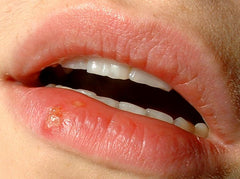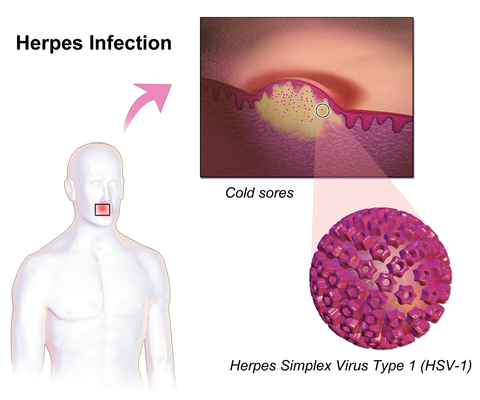What Are Cold Sores?
Despite the name, when you get painful blisters called cold sores, don't blame your common cold. Cold sores are caused by a virus, but not the kind that makes you sniffle and sneeze. Instead, they happen because of an infection with the herpes simplex virus (HSV).
Cold Sore Symptoms
 Cold sores, also called fever blisters, can show up anywhere on your body. They're most likely to appear on the outside of your mouth and lips, but you can also find them on your nose, cheeks, or cheek.
Cold sores, also called fever blisters, can show up anywhere on your body. They're most likely to appear on the outside of your mouth and lips, but you can also find them on your nose, cheeks, or cheek.
After the blisters form, you may notice that they break and ooze. A yellow crust or a scab builds up and eventually falls off, revealing new skin underneath.
The sores usually last 7 to 10 days and can easily spread to other people unless special precautions are taken.
Who Gets Cold Sores?
Just about everyone. Ninety percent of all people get at least one cold sore in their life. The symptoms are usually the most severe the first you time you get cold sores. Sometimes kids who are affected may become seriously ill.
After the first time you get cold sores, your body may develop antibodies, and you'll never have another infection. About 40% of U.S. adults, though, get repeated cold sores.
Cold sores generally are not serious, but the infection may be life-threatening for anyone who has AIDS or whose immune system has been curbed by other disorders or medications.
If you have a severe case of a skin condition called eczema aka dermatitis, you may get cold sores over large parts of your body.
There can sometimes be serious complications from a cold sore. If the infection spreads to the eye, it could affect your vision. If it spreads to the brain, it could lead to meningitis or encephalitis.
 What Causes Cold Sores?
What Causes Cold Sores?
There are two types of herpes simplex virus that can cause cold sores: HSV type 1 and HSV type 2. Cold sores are usually caused by HSV type 1.
You usually catch HSV when you come into contact with people or things that carry the virus. For instance, you can get it from kissing someone who's infected or when you share eating utensils, towels, or razors.
Both HSV type 1 and type 2 can cause sores on your genitals. They can be spread by oral sex. Genital herpes is usually caused by HSV type 2.
You may get cold sores as late as 20 days after you came into contact with the virus. Once the virus enters your body, the cold sore may appear near the part it entered. About 2 days before an attack, you may get itchy or feel sensitive at the spot.
If you do have a cold sore the next step is to learn how to prevent spreading cold sores.
Sources:
https://www.webmd.com
https://en.wikipedia.org
https://www.mayoclinic.org


 What Causes Cold Sores?
What Causes Cold Sores?